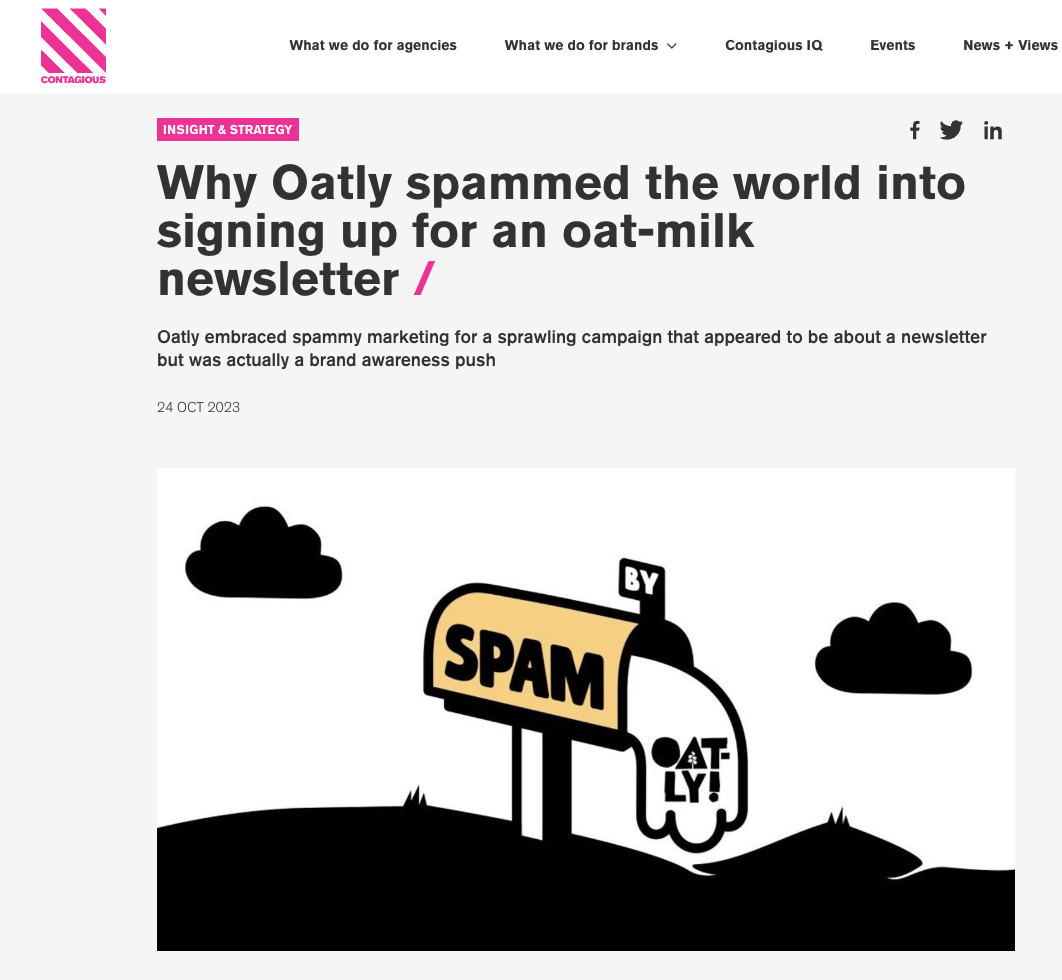Here’s a little secret most founders don’t realise until it’s crunch time: investors don’t just invest in businesses, they invest in brands. Your financials might prove you can keep the lights on, but it’s your marketing and communications strategy that shows you’ve got the kind of traction, community and momentum that makes investors want to lean in.
And here’s the kicker - you can’t scramble this together the week before your pitch deck goes out. A truly investor-ready marketing engine takes 6-12 months of thoughtful, consistent work. Think of it like training for a marathon: you don’t just buy new runners the night before and hope for the best.
So, why exactly do investors care about your marketing?
1. PR = Credibility You Can’t Manufacture
When investors are weighing up where to put their capital, one of the first things they’re asking themselves is: “Does anyone outside of this company care about them?” That’s where PR comes in. Regular, quality media coverage acts as third-party validation that your brand is interesting, relevant, and making waves in the market. Journalists are professional sceptics - so if they’re writing about you, that signals credibility to investors.
Take Oatly for example. Long before its $10 billion IPO, the Swedish oat milk brand was making headlines for its quirky, activist-led campaigns that challenged Big Dairy and sparked conversation. Investors weren’t just backing oat milk; they were backing a cultural movement. PR gave Oatly a megaphone, and investors saw the traction.

2. Email Marketing = Evidence of a Trusting Community
An investor isn’t just buying into your product - they’re buying into your ability to build and keep a community around it. And there’s no better proof of that than your email list.
Email marketing does three things:
- Primed Community Action - Gives you a community or advocates, as well as a prime audience for Crowdsourced funding and Kickstarter-style campaign.
- You can attract attention - Subscribers don’t just appear out of thin air — you’ve clearly got a pipeline working.
- You can hold it - Open rates, click-throughs, and a solid nurture journey prove you know how to engage people for the long term.
Look at Allbirds. Before their massive funding rounds and eventual IPO, they weren’t just selling comfy, sustainable sneakers. They were quietly building a highly engaged email database and community that proved they had real, lasting demand. When VCs looked under the hood, they didn’t just see shoe sales; they saw a scalable, loyal customer base ready to grow.
3. Paid Media = Proof of Demand + Scalability
Numbers talk - and nothing speaks louder to investors than data showing you can turn marketing dollars into revenue.
Running paid campaigns on social or search isn’t just about making sales. It’s about proving you understand your customer acquisition costs, your lifetime value, and the levers you can pull to scale. If you can say, “Every $1 we spend on ads returns $4 in revenue,” you’re basically speaking an investor’s love language.
Paid media is also a way to test new markets ahead of time. If you’re thinking about expanding, investors want evidence that your idea isn’t just hot in one postcode but has legs across different demographics and geographies. Paid campaigns give you that proof.
4. The Timing Matters (A Lot)
Here’s where many founders trip up: they only start thinking about their marketing when they’re already knee-deep in raising. By then, it’s too late to show meaningful results. Marketing - whether it’s PR, email growth, or paid ads - is a long game. Journalists need time to warm up to your story. Email databases need time to grow. Paid campaigns need time to test and optimise.
If you start working on this 6–12 months before your intended raise, you’ll walk into those investor meetings armed with:
- A portfolio of glowing media mentions.
- A growing, engaged database of subscribers.
- Hard numbers showing you can scale demand profitably.
That’s the stuff that turns investor heads.
The Big Picture: Marketing as Investor Insurance
At its core, strong marketing reduces risk for investors. It proves your business has visibility, traction, and staying power. It shows you’re not just another startup with a good idea - you’re a brand with momentum and customer advocacy.
Yes, the spreadsheets and forecasts matter. But they’re only half the story. Marketing is the other half that gives investors confidence that you can actually deliver on those forecasts.
Ready to Look Investor-Ready?
If you’re planning a raise - whether that’s through venture capital, crowdfunding, or even a Kickstarter - don’t leave your marketing to the last minute. Give yourself the runway to build credibility, community, and proof of demand.
At Compass Studio, we’ve helped purpose-led brands do just that: building their marketing engines so that when it’s time to seek investment, they’re not just another pretty pitch deck - they’re the brand everyone’s talking about.
If you want to start building your investor-ready marketing strategy, reach out to me and we can chat about this some more, Luke@compass-studio.com